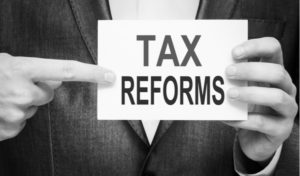
Despite a rising Fed funds rate and increasing inflation fears, rates on long term Treasuries have been coming down. Ben Eisen and Daniel Kruger report in The Wall Street Journal that some of the reason rates are falling is regulation-induced buying. Big companies are buying now to achieve a tax benefit coming as a result of the 2017 tax reform. They are funding pension plans now to receive the tax benefit they would have achieved under the 35% corporate tax regime, but will still only pay the 21% reformed rate.
Eisen and Kruger write:
S&P 500 companies are contributing to pension plans this year at a pace expected to nearly match 2017’s level, which at $63 billion was the most since 2003, according to Goldman Sachs Asset Management. Last year’s contributions were spurred in part by companies anticipating changes in the U.S. tax-code overhaul.
That and continued contributions this year have been a boon for the Treasury market because pension funds tend to invest in long-dated bonds to match their long-term liabilities. The yield on the 30-year bond has been falling recently, closing at 2.959% on Tuesday, down from a recent peak of 3.245% in mid-May.
Analysts are pinning the drop in yields—which happens as prices rise—partly on demand from pension funds. Long-term rates have remained low and U.S. inflation has picked up this year. Inflation poses a risk to bonds, and especially longer-dated ones, because it erodes the purchasing power of fixed-interest and principal payments.
Long-term yields are “very low because people are still putting money into Treasurys,” said Torsten Slok, an economist at Deutsche Bank . The difference between yields on 30- and 10-year Treasury debt has shrunk to about 0.13 percentage point this week from about 0.33 percentage point at the start of this year.
Voluntary contributions to pension funds, which already were brisk last year, have taken off recently thanks to the passage of the tax overhaul. This introduced a window for companies with underfunded plans to make additional contributions and garner a tax benefit, analysts say.
Firms that contribute through mid-September of this year can receive deductions based on the old 35% corporate tax rate, rather than the new 21% rate. A company that contributes $1 million to an underfunded pension plan could have $350,000 in tax savings before the deadline, but would have savings of just $210,000 after September.
It’s possible that once this buying stops, investors may see a resumption in the increase in rates for long-term Treasuries.



